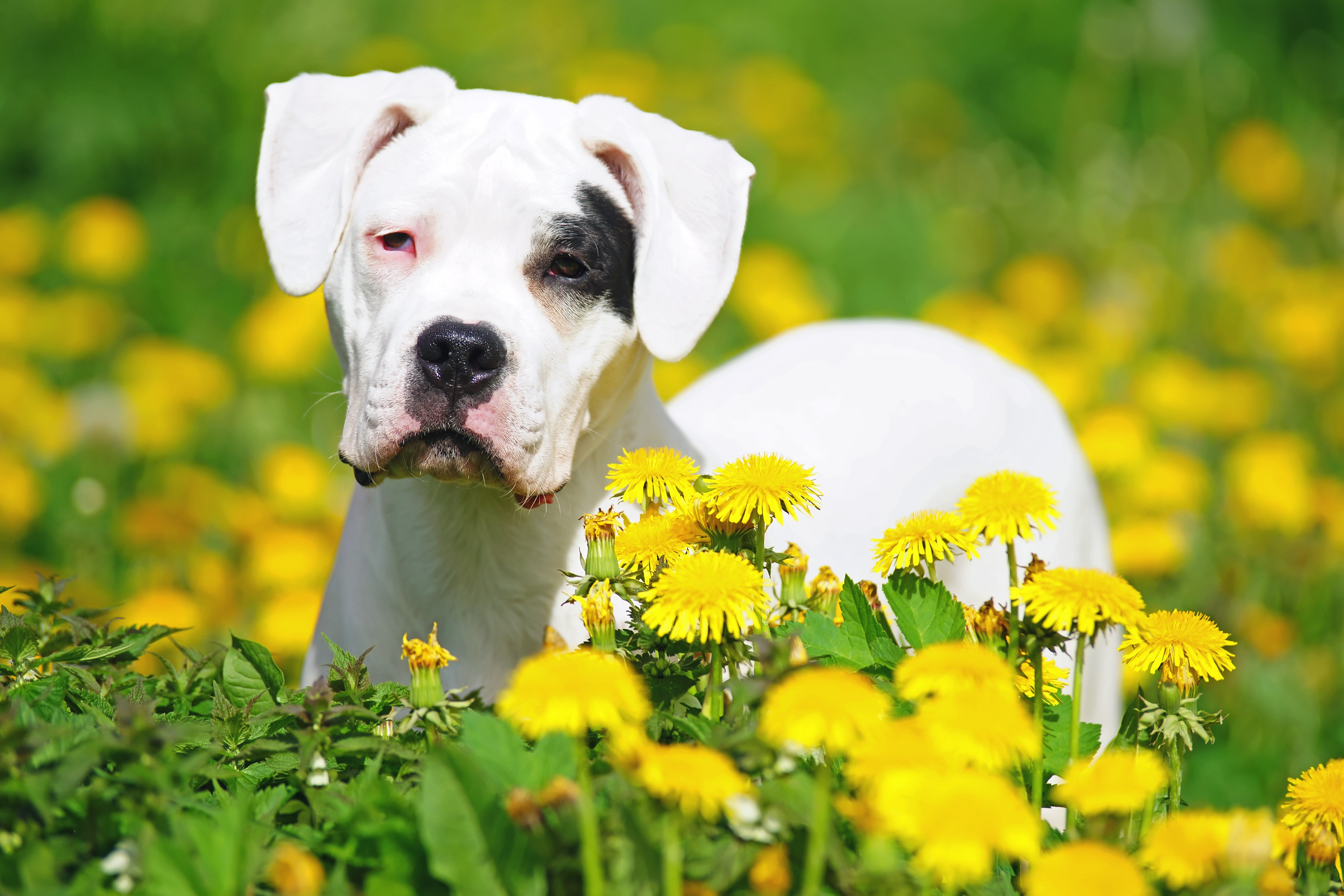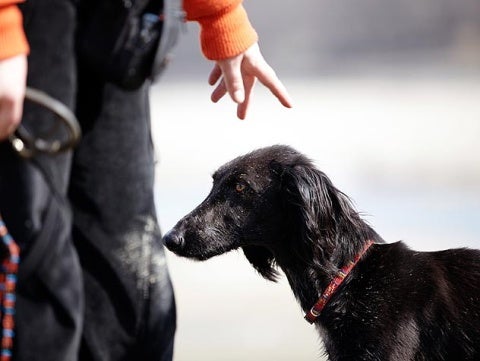Dogo Argentino
Known as “The White Ghost” for their ability to blend in with the morning mist, the snow-white Dogo Argentino is a powerful and athletic dog. They have short and dense coats and have exceptional scent abilities. This high-energy dog has a distinctive broad and domed head, thick neck, and proud chest with an alert and watchful expression. They are highly intelligent dogs but prone to independent thinking which can make training a bit more challenging.
Breed characteristics carousel
Learn More
Need to Know
- Might not be suitable for first-time dog owners
- Can be a very loyal family dog
- Extra training required
- Generally healthy breed
- Enjoys active walks
- Large dog
- Some drool
- Requires frequent grooming
- Barks and alerts to visitors/anything unusual
- Generally friendly with other dogs
- May need additional training to live with other pets
- May need additional supervision to live with children
- Needs a large yard in suburban or rural areas
- Can be left alone occasionally with training
- Prone to skin issues and allergies due to white coat
- AKC Registered Breed

Personality
Protective and watchful, the Dogo Argentino is a brave and loyal companion. They can be well-mannered if socialized early and properly. They can be trained to a high level. They are kind and friendly dogs who love to be around their families and show their affection and appreciation.
Argentine physician Dr. Antonio Nores Martinez first developed the Dogo Argentino in 1928 by crossing a local breed with Mastiffs, Bulldogs, and Bull Terriers. They were prized for their strong guarding instincts and sentinel skills as well as their strength and courageousness. It is a rare breed in the U.S.
Best for experienced dog owners, Dogo Argentinos need intensive training. Owners should be experienced with larger breeds and be confident in training and handling them. The dogs are very physically active and need that reflected in their owners. They are smart and independent, so a strong leader is imperative.
The Dogo Argentino is full of energy and needs to have that energy expended to result in a well-mannered dog. They enjoy long walks, runs, playtime with their owners, and mental stimulation, all of which are important to prevent boredom. Switch it up by swimming, hiking, and more to keep things interesting.
The Dogo Argentino does best in rural or suburban areas with fenced-in yards. They are large dogs and prefer space to stretch out inside as well.
Frequent brushing will keep the Dogo Argentino’s short and dense coat shiny and healthy. They can be bathed as needed. They do shed and drool some.
Clever but strong-willed, the Dogo Argentino needs obedience training and socialization. Positive reinforcement methods are best as these pups are sensitive, and patience will play a big role in training them. It’s ideal that owners have prior experience training a dog this big to be successful with the Dogo Argentino.
When properly socialized and trained, the Dogo Argentino dog breed can make a good family companion as they are affectionate and loyal. They are natural-born protectors, though, which might not be a temperament best for all homes and families, especially those with young children. They are large dogs that could be less spatially aware around small children and elderly family members, so families with older or no children are best.
The cost of a Dogo Argentino from a breeder is significantly more than the cost of adopting one from a local shelter or rescue. The adoption fee usually covers additional items such as spaying or neutering, vaccines, and microchipping.

Learn more about feeding and caring for your Dogo Argentino on Purina.
Did You Know?
- The Dogo Argentino got the nickname “The White Ghost” thanks to its ability to blend in with the morning mist.

